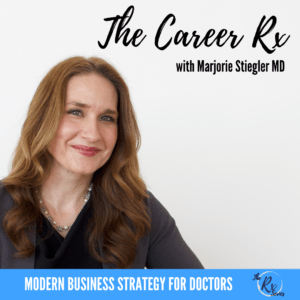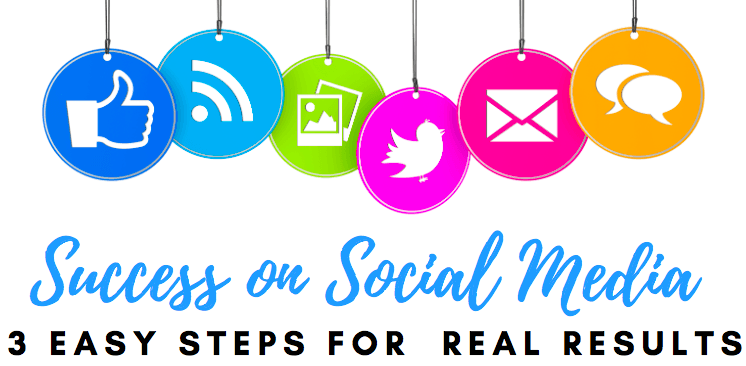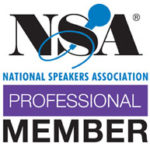Think you might be interested in a career in pharma, but not quite sure how doctors work for pharmaceutical companies? Listen to this episode to learn about physician roles in drug safety and pharmacovigilance, and see if that might be a potential career path for you!
In this episode of The Career Rx we’ll discuss:
- The overarching goals of pharmacovigilance positions
- How safety is a key consideration across the entire medicine lifecycle
- Far from boring, drug safety is a fascinating and rewarding physician career path
Today’s episode is a continuation of a series that’s specific to the pharmaceutical, biotech, and medical device industry. In this overview of careers in drug safety and pharmacovigilance, you’ll learn why it’s such an important part of industry, how it may meet your needs for thought-provoking and rewarding work, and a bit more about what a pharmacovigilance doctor actually does.
In this Episode:
[1:34] What is pharmacovigilance, or a drug safety physician in pharma?
[4:25] Post market safety and how your physician expertise is needed in pharma
[7:40] Capturing adverse events in clinical trials
[10:15] Is there causation or just association? You do detective work…
[14:50] Building blocks of an incredibly important and impactful nonclinical physician career
Ready to learn more about exactly how to find those kinds of jobs, or how to critically evaluate your own skills and experience for transferability? Join my course Industry Insider to get you the results you want, faster.
Links and Resources:
Industry Insider – learn exactly how to land a rewarding nonclinical career without a new degree, connections on the inside, prior experience, or a pay cut
Episode 88 – What Physicians Do in Pharma: Drug Discovery and Development
Episode 89 – Physician Jobs in Pharma: Medical Affairs
Episode 90 – Physician Jobs in Pharma: Clinical Research and CROs
LISTEN TO THIS EPISODE:
SUBSCRIBE TO THE CAREER RX PODCAST:
Get every episode on your preferred player…
Apple Podcast | Google Podcast | Spotify | TuneIn + Alexa | iHeart Radio
More for you:
The Speaking Rx learn the business of professional public speaking to establish yourself as a thought leader you are, and get paid for your speaking expertise
Launch an Online Course on Any Budget – know your course will sell before you spend any time or money to create it; plus, the exact logistical blueprint to get paying customers and a way to deliver your course without spending a dime (ready to scale up when you are!)
Transition to Industry Webinar
Let’s connect!
Twitter | Instagram | Facebook | LinkedIn
Thanks for joining me on this episode of The Career Rx!
Episode 91 – Physician Jobs in Pharma: Drug Safety and Pharmacovigilance
Hey there, I’m Marjorie Stiegler and you’re listening to The Career RX podcast, where we tackle the important things they don’t teach you in medical school. Like how to treat your career, like the business, it really is, with strategies to accelerate the kind of success that you want, because you deserve a career you love, and a career that loves you back. Are you ready? Let’s get into it.
Hey there, welcome back. We are doing a little mini series on the podcast of pharma related physician jobs. One of the things I’m often asked about is, you know, what, what exactly do physicians do within the pharmaceutical industry. And a lot of people have this image of just bench research, which is certainly part of it.
Research and development is part of the opportunity, as we’ve talked about in my other episodes, but today, I want to talk to you specifically in a brief overview about pharmacovigilance, which I think is such an important part of not only the activities of every pharmaceutical company, but also a regulatory bodies, like the FDA. Discussions of the kinds of job opportunities that are available in the pharmaceutical industry come up all the time in my course, Industry Insider. And so this will be a more broad overview.
But if you’re interested in deep dive, and really thinking about making a switch to that kind of career, where you can really make a huge impact for patients on a macro scale, then by all means, come check out Industry Insider in the show notes.
Okay, let’s get into pharmacovigilance. What is it I mean, the basic definition is what people think of as drug safety. This is science, and it’s closely linked to epidemiology. It is a collection of activities that are really related to detecting safety issues with medicines, and then assessing the data that come in, and really understanding adverse events and whether or not they are indeed related to the medicine or possibly just a progression of the disease itself that the medicine might treat, and how to prevent adverse effects or other drug related problems.
So information around for example, drug drug interactions, or if there’s a different way to administer the medicine, a different way to take the medicine, a caution that should be given to physicians or patients that helps them to prevent the possible adverse events that can occur.
These are sort of, this is the goal, right is to understand all of the things that might be related to drug safety for particular medicine, and then to take appropriate actions to really minimize that risk for patients. So most people who work in pharmacovigilance, which are sometimes called safety evaluators, or medical officers, are mostly pharmacists, and physicians, they have clinical expertise in various therapeutic areas.
But as I’ve said, in this podcast, and in my course, before, you need not necessarily have that direct, you know, clinical training, so long as you can develop it. So you need not limit yourself to applying for jobs that are in a particular area of expertise.
But somebody in that group is going to have expertise in the therapeutic area where the medicine is developed. And they will be good at researching and looking at a variety of signals, because there’s a lot of different ways that we get information about drug safety.
And again, the overarching goals of pharmacovigilance positions from both the pharmaceutical company and the regulatory point of view, is to really improve the public health, right, by detecting safety signals from all the available data sources, and then evaluating those signals to determine whether there’s a causal link.
And then to identify anything that might be a particular risk factor, predictor, something about the patient population, and then to recommend actions and communicate relevant safety information.
Now, some of this happens as a medicine is being studied and developed. And some of it happens in what’s called post market safety. So after a medicine is approved, and is actually being used with patients. I’ll start sort of from the latter part because it’s slightly shorter.
You know, one of the things that the kinds of things that can occur when a post market safety event is discovered when that signal is detected, and then research is done to determine causality is the the package insert, right, the prescribing information can be updated to have either different information or new highlighted or otherwise called box warnings. There can be safety communications that come out from the company.
There may even be safety communications that come out from the FDA to, again, all physicians so that they’re aware, and in the most extreme cases, certainly a medicine that had been approved could be withdrawn. From the market or the indication could be eliminated, a new contra indication could be added, right? Things like that, based on safety issues.
But obviously pharmacovigilance doesn’t start after a medicine is approved, that’s really safety surveillance in the post marketing period. But safety is evaluated from really the very beginning, including the preclinical phase, which are studies that are done in vivo or in vitro, but not in humans, to look at safety, and just overall biological activity of the medicine that’s being developed.
And then again, in phase one, which are those trials to determine safety and optimal dosage, or sometimes route of administration. And these are usually done on healthy volunteers.
And then safety is again evaluated in small studies and phase two of patients who have the disease or disorder, it’s intended to treat, still looking at safety, also looking at efficacy, right? Does it actually help what it’s intended to help, then if those progress on to your large phase three trials, these are, you know, a much higher number of patients enrolled. And they are, again, really looking at not only the efficacy, how well it works, but they’re looking at safety.
And if all of that is favorable, and meets the FDA requirements, then approval may occur and the medicine can come to market. But still, there is safety surveillance going on throughout that entire period. Safety is obviously one of the reasons that clinical trials progress in that stepwise way.
First was a very, you know, small size, small size studies with healthy volunteers, and then patients who have just a very narrow indication, and not a lot of other comorbidities, and things like that. So sometimes, safety physicians are involved in the design of some of these studies, in order to ensure that the right patient population is there, that there aren’t going to be confounding comorbidities. And that it’ll be very clear, also, that it’s that they can help to identify which will be the important adverse events to look for.
And as you’re likely well aware, I mean, there’s a very broad, broad umbrella of adverse events that are always looked for. But if there is something in particular, related either to the medicine being developed, or to the specific disease that’s intended to treat, then sometimes safety physicians will be involved in that.
But in contrast to clinical trials, one of the benefits of post market safety reporting, is that you may be able to detect things that are quite rare that have a really low frequency. And so didn’t come up early in the clinical trials, even in phase three trials that have larger populations. And it also captures adverse events from basically the entire population who might be using the medicine.
So this includes all indications including off label use. And it may be able to detect an increase in either the severity or increase in the frequency of known adverse events. So there may be things that are where they were detected in the clinical trials, but they were thought to be relatively small. And now in post market safety, you might find that those things are actually more frequent or more severe. So that requires an update to the label. Or you might be able to understand the way in which the medicine interacts with other drugs or even with foods.
Plus marketing safety reports, can come in through a variety of means. I mean, one is directly to the FDA, which represents a fairly small fraction of the number of reports and the other one is direct to the manufacturer, which is kind of the largest bucket usually.
And this, you know, both of these are, these are obviously voluntary, that a patient or a family member or healthcare professional issues the report. And then of course, it is a regulatory requirement for the safety physicians to follow up on that.
And so there’s reports that you have to prepare, write reports that have to be submitted to FDA. So again, if you’re working for a pharmaceutical company, you’ll be involved in analyzing these data and submitting these reports. If you’re working for the FDA, you’ll be involved in receiving them and evaluating them, but looking at adverse events that are both serious, but expected, or non serious but expected, if it’s more frequent again, or things that are non serious, but unexpected.
And so really all kinds of these things are evaluated and compared to what was known during the clinical trials to understand if there’s an update of communication that needs to be either issued directly as a letter to physicians or again to a change in the prescribing information in the label.
Obviously, post market reporting is imperfect, and it is voluntary. So a lot of times it can really depend. It can depend on media attention around the medicine, whether there are class action lawsuits that involve the medicine, it can involve the nature and severity of the adverse event – perhaps the length of time that the medicine has been on market.
So it’s imperfect, and it’s subject to all kinds of confounders, but it’s still a really important part of the science, it’s probably the least controlled part of the science, maybe that’s the important part. And so for, for many people, you know, if you kind of like things that are controlled and more, sort of, you know, fewer variables, then it’s that clinical trial phase that you may enjoy the most.
And if you really like sort of playing detective and understanding if there’s a new signal for safety, and then whether or not that signal could be, could be causal, right? If there’s a causal relationship between the medicine and the adverse event, then you might be quite interested in post market safety monitoring. And as I’ve mentioned, a safety signal is really a reported piece of information that, you know, implies a possible causal relationship between a medicine and an adverse event.
And it’s a relationship that was previously either unknown, or was not known to the same degree right? Again, severity or frequency is different, or was incompletely understood or incompletely documented. And sometimes this can be, the safety signal needs to be supported by multiple reports, either multiple voluntary reports, or sometimes case reports in the literature.
But this needs, it can’t just be one thing. But when you start to see multiple case reports, and observed increase in a certain event, or an interaction, or a new at risk population, these are the kinds of things that might constitute a safety signal.
And so sources of these signals are sometimes clinical trials and sometimes self reporting, but also the medical literature that comes out, and studies that are done by academics or just other parties that are, you know, not the pharmaceutical company itself. So it doesn’t have that data, but it sees what’s published, or it could come from reports in the media. I mean, it comes in from a variety of ways, which is why I’m saying you’re sort of playing detective there. And in thinking about whether there’s a causal relationship, you know, there are a handful of factors.
So, the researchers who are involved in this will be looking at things like the temporal relationship, you know, the time from the taking of the medicine to the development of the adverse events, they will be looking at the biologic plausibility, right, what do we know about the medicine? And what do we know about what happened? And are those you know, is it plausible those things are related?
Is there a dose response relationship, meaning, you know, people at a lower dose don’t experience that same adverse event people at a higher dose do? Is there consistency, perhaps across multiple medicines in the same class of medicines? And are there other things that should be ruled out? And also, is this potentially related to the natural progression of the disease, rather than to the medicines? I think this is really fascinating. The signal detection, and evaluation is really fascinating medicine.
It’s also obviously incredibly important. So when physicians come to me, and they’re interested in pharmaceutical careers, I mean, I think one of the things people care about the most is making an important difference for patients and really advancing science.
And they want to feel assured that switching from clinical medicine where they do feel like they have that impact on a patient one on one, to doing some kind of work within either the regulatory or the pharmaceutical companies themselves, will have that same kind of positive impact. Pharmacovigilance is absolutely one of those things, it’s so incredibly important that the medicines that come to market that are approved, have gone through really rigorous clinical trials across all of those stages, early and late stage development, looking at safety, evaluating safety, thinking about, you know, how this could interact with patients, thinking about drug drug interactions, all of that, so that it’s well understood by the time it comes, and to the FDA for approval.
And then once it’s available, again, that post market surveillance, really incredibly important, because if there’s something that is so rare that just hasn’t been detected, yet, has hasn’t been part of what’s understood about that medicine, and how it interacts either with foods, drugs, or patients or specific patient populations.
It’s so incredibly important to be able to identify those things, and update the FDA about it update prescribing physicians and pharmacists about it, potentially even to update patients about it, and to ensure that it’s used appropriately and that if there is something that would warrant a change in in the warnings in the prescribing information or possibly even something that would cause it to need to be withdrawn from the market. That’s an incredibly important and impactful thing to do.
So in a big broad nutshell, that is pharmacovigilance for you, and it’s a really fascinating and rewarding physician career in pharma. I hope this has been helpful to you as you think about the different ways in which you might look at physician jobs in the pharmaceutical industry. Please do check out the rest of the episodes in this series to understand a little bit more about what doctors do in the pharmaceutical, biotech and medical device industries.
It’s really great stuff and again, if you’re interested in really learning more about how to make that transition for yourself, please do come check out Industry Insider. This does not need to be mysterious. It is absolutely something you can do. And I can help. That’s all for today. Bye for now.
Before you go, please review, share and subscribe to this podcast. Your support makes all the difference and it truly helps this information reach someone who may really need it. Until next time, thanks for listening
Please be sure to leave me a review on Apple and don’t forget to send me your questions so I can answer them and give you a shout out on a future episode.








